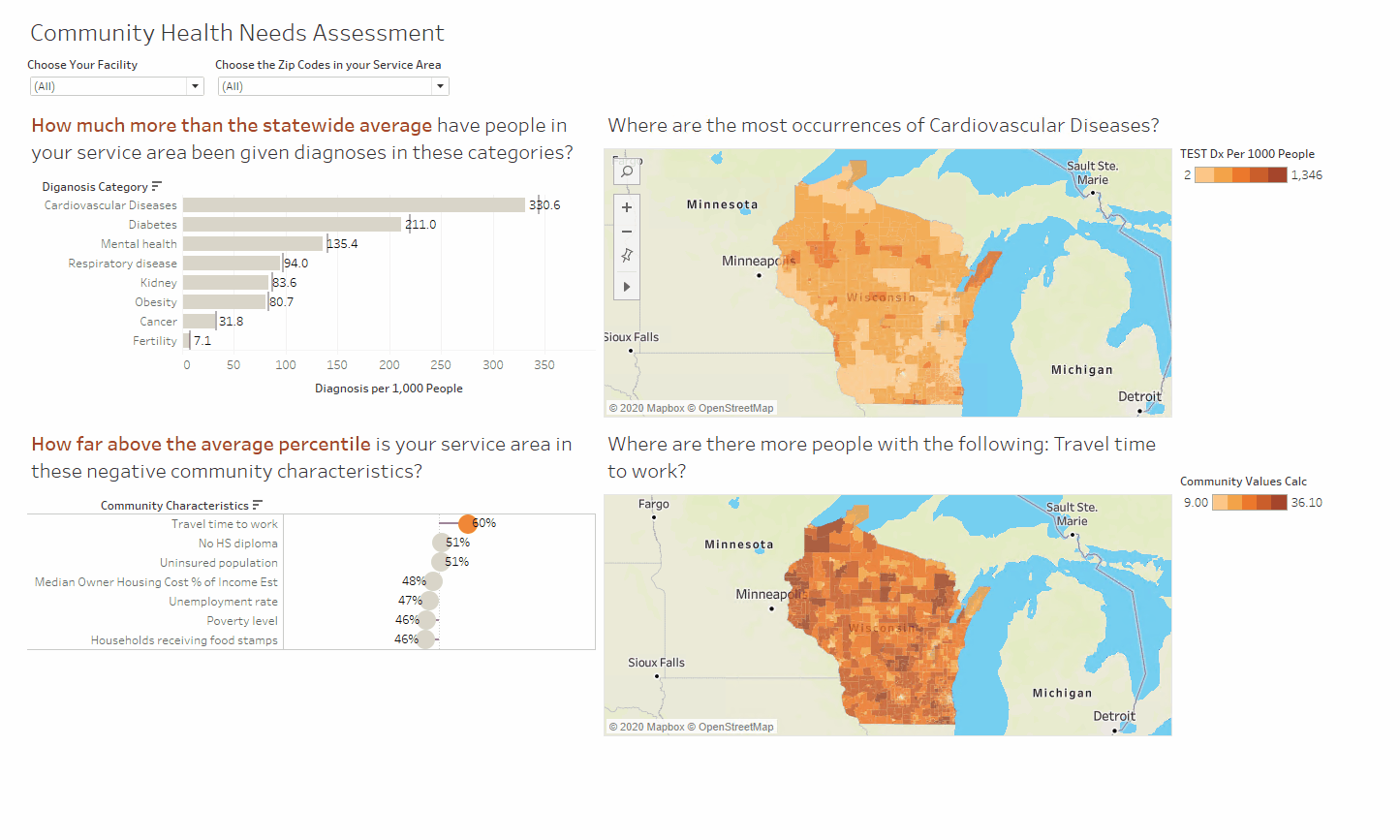Vol. 66, Issue 19
View more issues of The Valued Voice
Sign Up for WHA's Newsletter
Click here to view past issues
IN THIS ISSUE
- Wisconsin Hospitals State PAC & Conduit Campaign Gains Momentum
- New Standards for Plans, Networks in Exchange Marketplace for 2023
- COVID-19 Lockdown Disrupts Contrast Media Supply Chain
- New Ruling Affirms Insurer ED Policy Violates Federal Law
- “60 Minutes” Features Children’s Wisconsin Response to Rising Mental Health Crisis Among Adolescents
- Wisconsin Rural Health Conference: June 15-17
- Physician Leadership Development Conference: June 16-17
- WHA Resource Spotlight: WHAIC Data Maps Help Identify Community Health Needs
EDUCATION EVENTS
Dec. 16, 2025
Common Hospital DeficienciesJan. 14, 2026
Caring for Wisconsin’s Caregivers Well-Being First Champion Challenge for Credentialing KickoffJan. 28, 2026
2026 WHA Health Care Leadership AcademyClick here to view education event calendar
View more issues of The Valued Voice
Sign Up for WHA's Newsletter
Thursday, May 12, 2022
WHA Resource Spotlight: WHAIC Data Maps Help Identify Community Health Needs
In 2021, the WHA Information Center (WHAIC) team developed a Community Health Needs Assessment (CHNA) mapping tool that helps hospitals and community partners identify the most prevalent clinical conditions and areas of need in their communities.

Using data from both WHAIC and the American Community Survey, the tool allows for specific analysis down to the census tract level of individual communities. WHAIC employed the U.S. Census Bureau’s American Community Survey data to help narrow the community characteristics that had the most influence on health outcomes. Clinical conditions data come from WHAIC claims, which are received from every hospital within the state.
Accompanying the dashboard is a white paper that includes more details on the data behind the tool and provides instruction on how to use the resource, which is intended to help hospitals and health systems develop and implement CHNA plans.
This WHA member-only tool can be accessed within the WHA member portal (a log in is required) at https://www.wha.org/Community-Health-Needs.
For questions, contact WHAIC Vice President Jennifer Mueller.

Using data from both WHAIC and the American Community Survey, the tool allows for specific analysis down to the census tract level of individual communities. WHAIC employed the U.S. Census Bureau’s American Community Survey data to help narrow the community characteristics that had the most influence on health outcomes. Clinical conditions data come from WHAIC claims, which are received from every hospital within the state.
Accompanying the dashboard is a white paper that includes more details on the data behind the tool and provides instruction on how to use the resource, which is intended to help hospitals and health systems develop and implement CHNA plans.
This WHA member-only tool can be accessed within the WHA member portal (a log in is required) at https://www.wha.org/Community-Health-Needs.
For questions, contact WHAIC Vice President Jennifer Mueller.
Vol. 66, Issue 19
Thursday, May 12, 2022
WHA Resource Spotlight: WHAIC Data Maps Help Identify Community Health Needs
In 2021, the WHA Information Center (WHAIC) team developed a Community Health Needs Assessment (CHNA) mapping tool that helps hospitals and community partners identify the most prevalent clinical conditions and areas of need in their communities.

Using data from both WHAIC and the American Community Survey, the tool allows for specific analysis down to the census tract level of individual communities. WHAIC employed the U.S. Census Bureau’s American Community Survey data to help narrow the community characteristics that had the most influence on health outcomes. Clinical conditions data come from WHAIC claims, which are received from every hospital within the state.
Accompanying the dashboard is a white paper that includes more details on the data behind the tool and provides instruction on how to use the resource, which is intended to help hospitals and health systems develop and implement CHNA plans.
This WHA member-only tool can be accessed within the WHA member portal (a log in is required) at https://www.wha.org/Community-Health-Needs.
For questions, contact WHAIC Vice President Jennifer Mueller.

Using data from both WHAIC and the American Community Survey, the tool allows for specific analysis down to the census tract level of individual communities. WHAIC employed the U.S. Census Bureau’s American Community Survey data to help narrow the community characteristics that had the most influence on health outcomes. Clinical conditions data come from WHAIC claims, which are received from every hospital within the state.
Accompanying the dashboard is a white paper that includes more details on the data behind the tool and provides instruction on how to use the resource, which is intended to help hospitals and health systems develop and implement CHNA plans.
This WHA member-only tool can be accessed within the WHA member portal (a log in is required) at https://www.wha.org/Community-Health-Needs.
For questions, contact WHAIC Vice President Jennifer Mueller.
IN THIS ISSUE
- Wisconsin Hospitals State PAC & Conduit Campaign Gains Momentum
- New Standards for Plans, Networks in Exchange Marketplace for 2023
- COVID-19 Lockdown Disrupts Contrast Media Supply Chain
- New Ruling Affirms Insurer ED Policy Violates Federal Law
- “60 Minutes” Features Children’s Wisconsin Response to Rising Mental Health Crisis Among Adolescents
- Wisconsin Rural Health Conference: June 15-17
- Physician Leadership Development Conference: June 16-17
- WHA Resource Spotlight: WHAIC Data Maps Help Identify Community Health Needs

